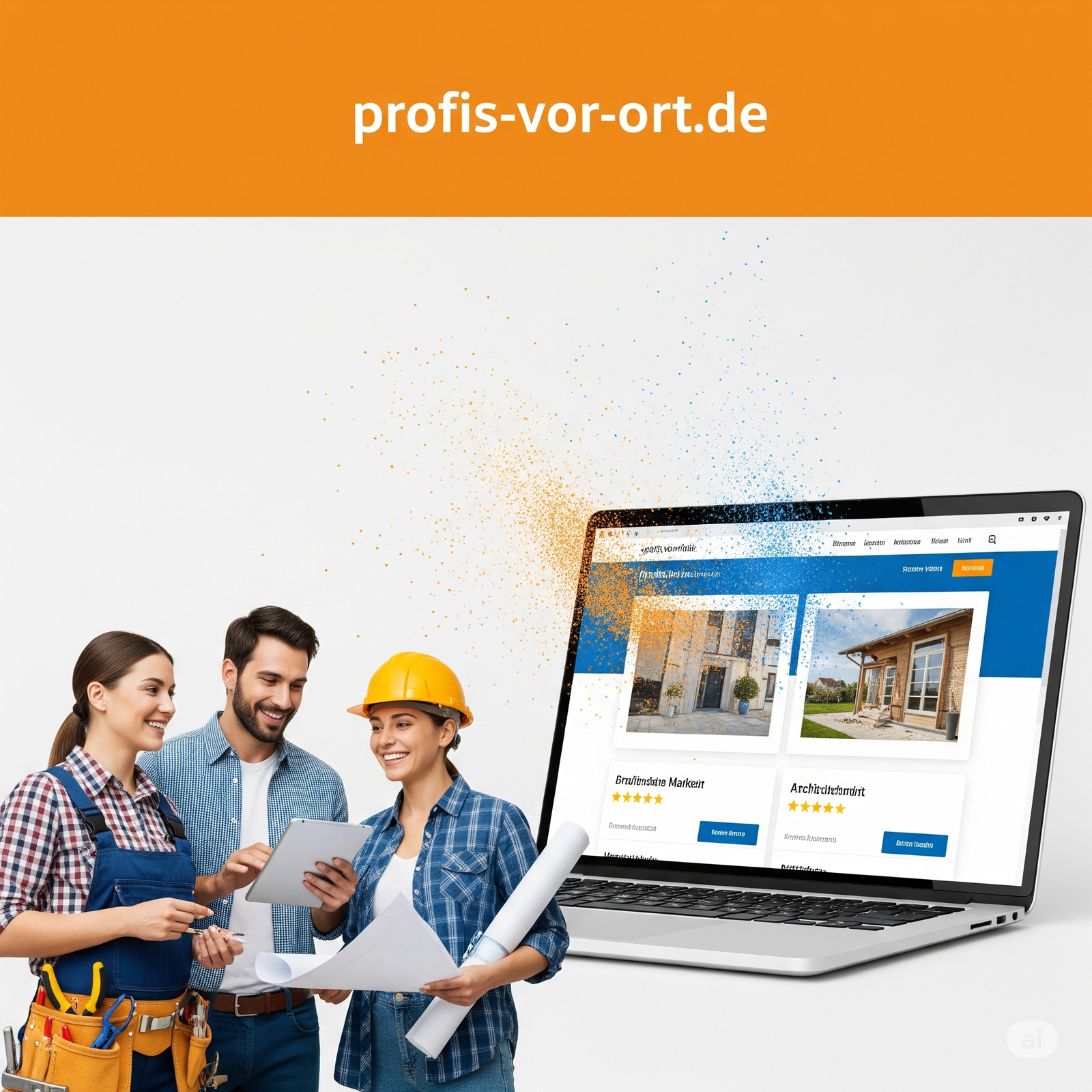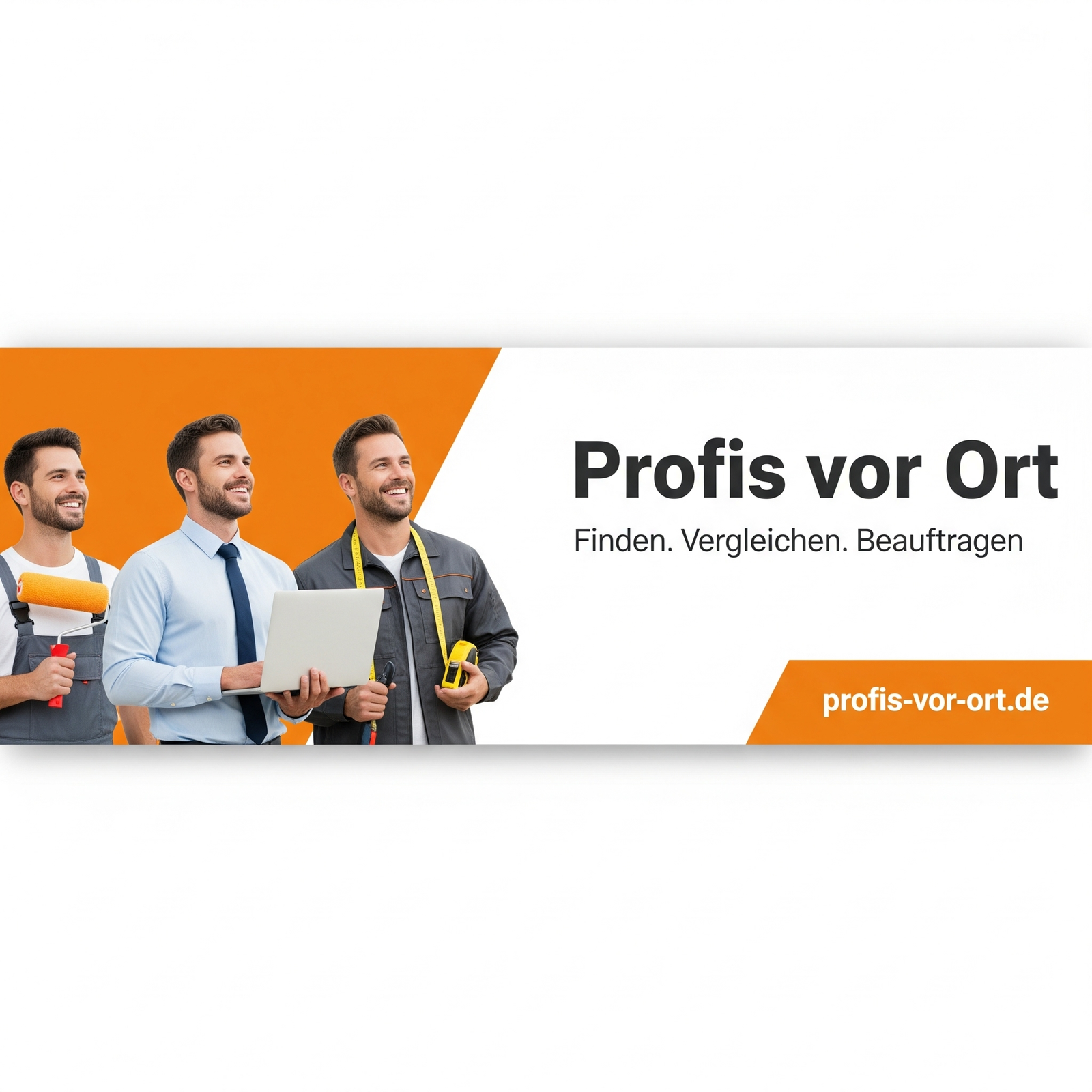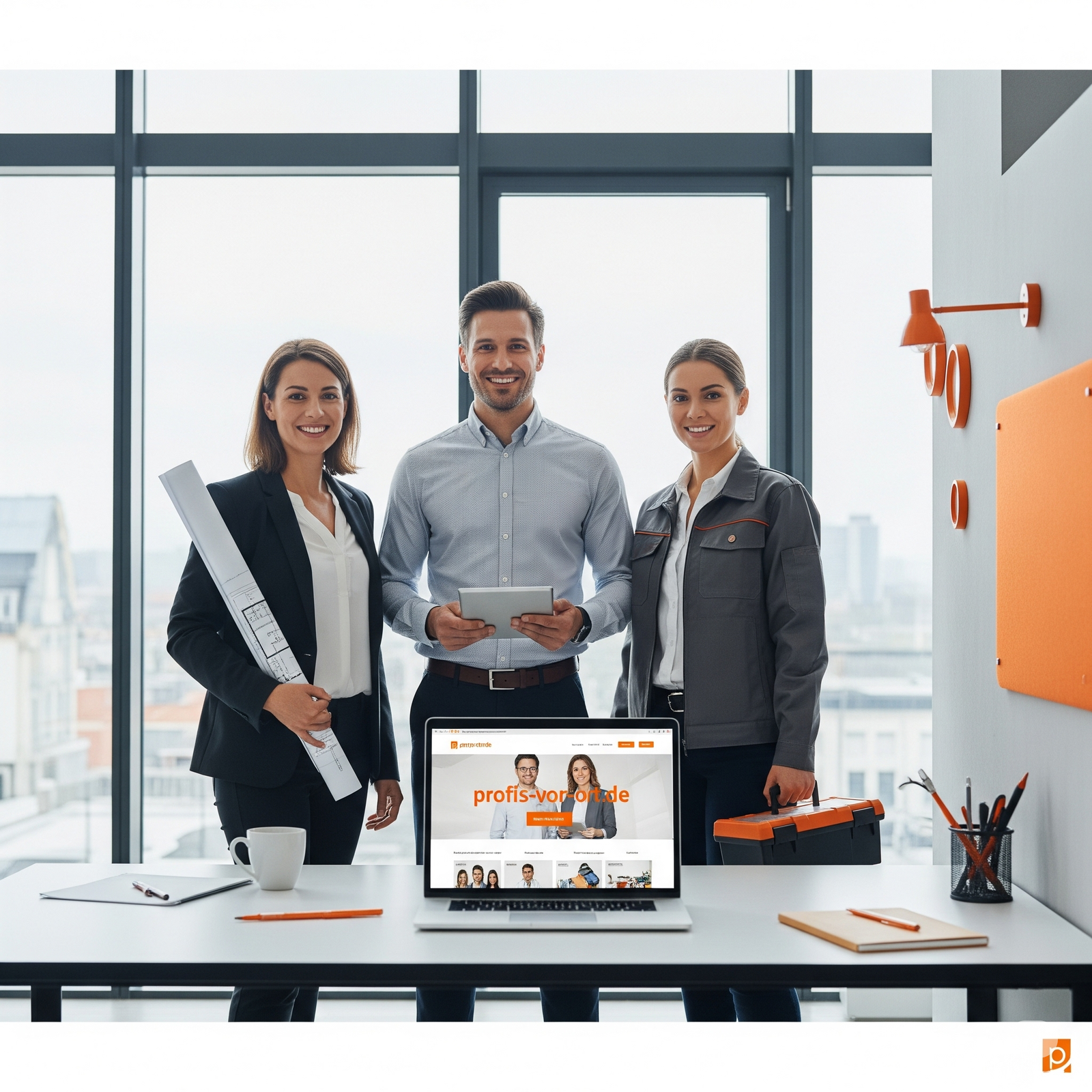Welcome to the definitive guide on Amazon SEO for businesses in Düsseldorf. In the bustling digital marketplace of today, simply having a product on Amazon is not enough. To truly succeed, you need visibility, and that's where Amazon Search Engine Optimization (SEO) becomes your most powerful tool. This comprehensive article will not only introduce you to the premier Amazon SEO agencies in the Düsseldorf region but will also serve as your complete masterclass on the subject. We'll delve into over 20 crucial subtopics, equipping you with the knowledge to dominate the Amazon algorithm, enhance your product listings, and ultimately, drive significant revenue growth. Whether you're a seasoned seller or just starting, understanding the nuances of how to rank products on Amazon is the key to unlocking your brand's full potential.

1. What is Amazon SEO and Why Is It Crucial for Düsseldorf Sellers?
Amazon SEO is the strategic, multi-faceted process of optimizing your product listings to achieve higher rankings in Amazon's search results for relevant keywords. Unlike Google SEO, which aims to drive traffic to a diverse range of content on a website, Amazon SEO is laser-focused on a single platform with one overarching goal: **conversion**. For sellers in a dynamic and competitive economic hub like Düsseldorf, a city at the heart of European commerce, mastering Amazon SEO is not just an advantage; it's a fundamental requirement for survival and growth.
Consider this: Amazon.de is one of the largest e-commerce sites in the world, with tens of millions of active customers in Germany alone. Within this vast marketplace, millions of third-party sellers are vying for attention. Without a robust SEO strategy, your products are effectively invisible. A Düsseldorf-based business that neglects Amazon SEO is leaving a significant amount of revenue on the table, allowing competitors to capture valuable market share. Effective optimization within your Amazon Seller Central account is the engine for organic growth, leading to increased traffic, higher conversion rates, an improved Best Seller Rank (BSR), and a sustainable sales velocity that feeds the ranking algorithm. It is the bedrock upon which all other Amazon marketing efforts, including Pay-Per-Click (PPC) advertising, are built.
2. The Amazon A10 Algorithm: Decoding the Ranking Factors
To win at Amazon SEO, you must understand the complex algorithm that governs it: the A10 algorithm. As the successor to the older A9, A10 places an even stronger emphasis on **customer behavior, satisfaction, and seller authority**. It has evolved beyond simple keyword matching to a sophisticated system that aims to predict and deliver what the customer truly wants. The A10 algorithm analyzes a multitude of factors to determine which products offer the best possible customer experience. While Amazon keeps the exact formula a closely guarded secret, extensive analysis has revealed the key ranking signals:
- Sales History & Velocity: This is paramount. Products that sell more frequently and consistently are heavily favored. The algorithm sees strong sales as the ultimate proof of a product's desirability and relevance.
- Conversion Rate (Unit Session Percentage): Arguably the most important metric. It measures the percentage of visitors who purchase your product after landing on the page. A high conversion rate tells Amazon that your listing is effective and your product is compelling.
- Click-Through Rate (CTR): The percentage of shoppers who click on your product after seeing it in the search results. A high CTR indicates that your main image, title, price, and review rating are attractive to customers.
- Relevancy Factors: This includes the strategic placement of high-value keywords in your title, bullet points, description, and backend search terms. The algorithm must be able to clearly understand what your product is and for which searches it is relevant.
- Customer Reviews & Seller Feedback: The quantity, quality, and recency of reviews are massive trust signals. A high average star rating is critical. Likewise, positive seller feedback demonstrates reliability and good customer service.
- Price & Shipping Method: Competitive pricing is crucial. Furthermore, products fulfilled by Amazon (FBA) and eligible for Prime shipping have a significant advantage due to the fast, reliable delivery that customers expect.
- Inventory Levels: Running out of stock can be devastating to your rank. The algorithm penalizes listings that cannot fulfill orders, so maintaining healthy inventory levels is an indirect but vital SEO factor.
Understanding these elements is the first step in crafting a holistic Amazon SEO strategy that appeals to both the A10 algorithm and, most importantly, the human customer.
3. Foundational Keyword Research for Amazon
Keyword research is the absolute cornerstone of any successful Amazon SEO campaign. It is the meticulous process of identifying the exact search terms and phrases your target audience uses when they are ready to buy products like yours. This is not about guesswork; it is about data-driven analysis to understand customer intent. A thorough keyword research process involves several steps:
- Brainstorming Seed Keywords: Start by creating a list of broad, foundational terms that describe your product. If you sell a coffee grinder, your seed keywords would be "coffee grinder," "bean grinder," "kaffeemühle," etc.
- Using Specialized Tools: Leverage professional Amazon keyword research tools like Helium 10, Jungle Scout, or MerchantWords. These tools provide crucial data on search volume, competition, and related keywords directly from Amazon's ecosystem.
- Analyzing Competitors (Reverse-ASIN): One of the most powerful techniques is to perform a "Reverse-ASIN" lookup on your top competitors' products. This reveals the exact keywords they are ranking for and driving sales from, providing you with a proven list of terms to target.
- Identifying Keyword Types:
- High-Volume "Fat Head" Keywords: Broad, one or two-word terms with massive search volume (e.g., "yoga mat"). They are highly competitive but essential for visibility.
- High-Intent "Long-Tail" Keywords: More specific, multi-word phrases that have lower competition and often much higher conversion rates (e.g., "eco friendly non slip yoga mat for hot yoga").
- LSI (Latent Semantic Indexing) Keywords: These are related or synonymous terms that help Amazon understand the context of your listing (e.g., for "yoga mat," LSI keywords might include "exercise mat," "pilates mat," "workout mat").
A comprehensive and prioritized keyword list is your strategic blueprint. It will guide every single aspect of your listing optimization, from the title to the backend search terms, ensuring you capture the maximum amount of relevant traffic.
4. Crafting High-Converting Product Titles
Your product title is the single most important piece of on-page SEO real estate on your entire listing. It carries the most weight in Amazon's ranking algorithm and is often the deciding factor in a customer's decision to click. A powerful title must achieve a delicate balance: be keyword-rich for the algorithm and highly readable and persuasive for the human shopper. Follow this proven formula for success:
[Brand Name] + [Main Keyword/Product Type] + [Key Feature 1] + [Key Feature 2] + [Benefit/Use Case] + [Size/Color/Quantity]
Bad Example: "Great Mat"
Good Example: "ProfiKitchen | Silicone Baking Mat Set of 2 | Non-Stick & Heat-Resistant | for Cookies, Pastries & Roasting | Fits Half Sheet Pans (Blue)"
This title is strategically packed with relevant keywords ("silicone baking mat," "non-stick," "heat-resistant") while also providing essential information that answers customer questions and encourages clicks. Remember to place your most important keywords at the beginning, as titles are often truncated on mobile devices. Avoid keyword stuffing (repeating the same keyword) and using all caps, as this looks unprofessional and can deter customers.

5. Writing Persuasive Bullet Points (Key Product Features)
After the title and images, shoppers immediately scan the bullet points. This is your prime opportunity to sell the **benefits**, not just list the features. You typically have five bullet points to make your case. Each one should start with a capitalized, benefit-driven header to grab attention, and then elaborate on the corresponding feature. This is also a critical area to weave in your secondary and long-tail keywords naturally.
- FOCUS ON BENEFITS, NOT JUST FEATURES: A feature is what something *is*, a benefit is what it *does for the customer*.
- Feature: "Made from 304 Stainless Steel."
- Benefit-Driven Bullet: "✅ RUST-PROOF DURABILITY FOR A LIFETIME: Crafted from premium, food-grade 304 stainless steel, our water bottle is built to withstand drops, dents, and daily use, ensuring your investment is protected."
- ADDRESS CUSTOMER PAIN POINTS: Think about the problems your product solves and highlight the solutions.
- Pain Point: Leaky bags.
- Solution Bullet: "✅ 100% LEAK-PROOF DESIGN: Never worry about damaging spills in your gym bag or backpack again. Our innovative double-gasket sealed lid is perfect for your daily commute in Düsseldorf."
- IMPROVE READABILITY: Use emojis like checkmarks (✅), stars (⭐), or arrows (➡️) sparingly to break up text and draw the reader's eye to key points. Start each bullet with a capitalized phrase.
- INCORPORATE KEYWORDS STRATEGICALLY: Naturally include important long-tail and LSI keywords you discovered during your research to enhance your listing's relevance for a wider range of search queries.
6. The Power of a Compelling Product Description
While the product description carries less direct SEO weight than the title and bullets, it is absolutely crucial for converting shoppers who are seriously considering a purchase. This is your space for brand storytelling. Use it to expand on your brand's mission, detail specific use cases, and proactively overcome potential customer objections. For sellers not enrolled in the Brand Registry, you can use basic HTML like bolding (``), paragraphs (`
`), and line breaks (`
`) to structure the text and improve readability, preventing a dreaded "wall of text." For brands enrolled in the Amazon Brand Registry, this section is replaced by A+ Content, which offers a much richer, more visually engaging canvas to showcase your product and brand story.
7. Leveraging Backend Keywords for Hidden SEO Power
Backend keywords, also known as "Search Terms," are a potent and often underutilized tool in Amazon SEO. These are keywords you add to the backend of your product listing in Seller Central. They are completely invisible to customers but are fully indexed by Amazon's A10 algorithm. This is the perfect place to include keywords that you couldn't fit naturally into your main listing copy. Best practices include:
- No Repetition: Do not repeat keywords that are already present in your title, bullet points, or description. Amazon already indexes those. Use this space for new terms.
- Include Synonyms & LSI Keywords: Add variations and related terms (e.g., for "garlic press," add "garlic mincer," "garlic crusher").
- Common Misspellings: Include common typos that customers might make.
- Foreign Language Terms: Add relevant terms in other languages if applicable to your customer base (e.g., Spanish terms in the US marketplace).
- No Punctuation: Do not use commas, semicolons, or periods. Simply separate keywords with a single space.
- Maximize the Space: Utilize the full character/byte limit (currently 249 bytes) to give Amazon as much relevant information about your product as possible.

8. A+ Content and EBC: Elevating Your Brand Story
For brand-registered sellers, A+ Content (formerly known as Enhanced Brand Content or EBC) is a certified game-changer. It allows you to transform your product description from a plain block of text into a visually rich, magazine-style layout. You can use a variety of modules, including high-quality images, comparison charts, text overlays, and brand story carousels. According to Amazon, implementing A+ Content can increase conversion rates by an average of 5-10%. It helps you to:
- Build Brand Trust: A professional A+ layout signals a legitimate and serious brand.
- Explain Complex Features: Use detailed images and text to better explain how your product works.
- Cross-Sell and Up-Sell: Comparison charts can be used to compare your product to other models in your line, encouraging customers to upgrade or purchase complementary items.
- Stand Out From Competitors: A stunning A+ page immediately differentiates your listing from those with a plain text description.
There is also Premium A+ (or A++) Content available to high-volume brands, which offers even more immersive modules like embedded video and interactive hotspots.
9. The Critical Role of High-Quality Product Images and Video
On Amazon, your product images are your digital packaging and your silent salesperson. Since customers cannot physically touch or inspect your product, your images must do all the heavy lifting. They must be high-resolution (at least 1000x1000 pixels to be zoomable), professional, and compelling. Your image stack (the 7-9 image slots you have) should be a visual sales pitch:
- Main Image: A crystal-clear, perfectly lit shot of the product on a pure white background. This is a strict and non-negotiable Amazon requirement.
- Infographics: Images with text and graphical overlays that highlight key features, dimensions, materials, or benefits in an easily digestible format.
- Lifestyle Images: Show your product being used in its intended environment by your target demographic. This helps customers visualize the product in their own lives.
- Comparison Charts: Images that visually compare your product to key competitors, highlighting your unique advantages.
- Instructional/How-To Images: Show how to assemble, use, or care for the product, reducing customer confusion and potential returns.
Furthermore, adding a **product video** is one of the single most effective ways to boost conversion. A short (30-60 second), engaging video can demonstrate your product's value in a dynamic way that static images simply cannot, answering questions and building excitement.
10. Managing Customer Reviews and Ratings for Social Proof
Reviews are the lifeblood of an Amazon listing and a cornerstone of the A10 algorithm. They provide the **social proof** that new customers rely on to make a purchase decision. A high average star rating and a large number of recent reviews are massive ranking factors. Actively and compliantly managing your reviews is a continuous process:
- Use Amazon's "Request a Review" Button: Within Seller Central, you can use a compliant, one-click method to ask for reviews from customers 5-30 days after delivery.
- Provide Excellent Products & Customer Service: The best way to get good reviews is to have a great product and to proactively solve customer issues to prevent negative reviews before they happen.
- Enroll in the Amazon Vine Program: For new products, you can enroll in the Vine program to get up to 30 initial reviews from a pool of trusted Amazon reviewers. This is crucial for gaining early traction.
- Monitor and Respond: Keep an eye on new reviews. While you can't remove negative reviews that don't violate policy, understanding customer feedback is vital for product improvement.
Never, under any circumstances, incentivize reviews (e.g., offer gift cards) or engage in any other "black-hat" tactics. Violating Amazon's terms of service can lead to severe penalties, including account suspension.
11. Amazon PPC and its Symbiotic Relationship with SEO
Amazon Pay-Per-Click (PPC) advertising and organic SEO are not separate strategies; they are two sides of the same coin, working together in a powerful symbiotic relationship. A well-managed PPC campaign directly fuels your organic ranking. When you run ads for a specific keyword and a customer clicks that ad and buys your product, you have sent a powerful signal to the A10 algorithm: your product is highly relevant and converts well for that keyword. This "sales velocity" is a primary ranking factor. Use the different types of PPC to:
- Sponsored Products: These are the most common ads, appearing in search results and on product pages. Use them to launch new products, drive sales on your core keywords, and defend your brand against competitors.
- Sponsored Brands: These ads appear at the top of search results and feature your brand logo, a custom headline, and multiple products. They are excellent for building brand awareness and driving traffic to your Amazon Brand Store.
- Sponsored Display: These ads can appear both on and off Amazon, allowing you to retarget customers who have previously viewed your product or target shoppers browsing competitor listings.
A cohesive strategy integrates both SEO and PPC to create a "flywheel effect." Paid ads boost organic rank, and a strong organic rank improves your ad performance by increasing relevance, which can lead to a higher Quality Score and lower cost-per-click (CPC).
12. The Importance of the Best Seller Rank (BSR)
The Amazon Best Seller Rank (BSR) is a number assigned to nearly every product, indicating how well it's selling compared to other items within the same category. A lower BSR is better (a BSR of #1 means it's the top-selling product in that category). While BSR is a **result** of sales and not a direct driver of rank, it provides powerful social proof. Customers are far more likely to trust and purchase a product that displays the coveted orange "Best Seller" badge. Your BSR is updated hourly and is heavily influenced by **recent sales velocity** more than long-term historical sales. This means a recent spike in sales can dramatically improve your BSR. Therefore, consistent sales, driven by a strong, integrated SEO and PPC strategy, are the key to achieving and maintaining a low BSR and the trust that comes with it.
13. Analyzing and Tracking Your Amazon SEO Performance
Amazon SEO is not a "set it and forget it" task. The marketplace is a living ecosystem. You must continuously monitor your performance to adapt to algorithm changes, competitor actions, and shifting customer trends. Key metrics and reports to track within Seller Central include:
- Keyword Rank Tracking: Use third-party tools (like Helium 10 or Jungle Scout) to monitor your position in the search results for your most important keywords. Are you moving up or down?
- Business Reports: Dive into the "Detail Page Sales and Traffic by ASIN" report. Here you can track your Sessions (traffic), Page Views, and most importantly, your **Unit Session Percentage** (your conversion rate).
- Brand Analytics: For brand-registered sellers, this is a treasure trove of data. You can see the top search terms in your category, analyze customer demographics, and see which other products your customers are buying.
- Advertising Reports: Your "Search Term Report" from PPC campaigns is a goldmine for discovering new, high-converting customer keywords that you can then move into your organic SEO strategy.
Regularly analyzing this data will reveal what's working and what's not, allowing you to make informed, data-driven decisions to further optimize your listings and advertising campaigns.

14. Common Amazon SEO Mistakes to Avoid
Many sellers, especially those new to the platform, make costly and easily avoidable mistakes that hinder their growth. Steer clear of these common pitfalls:
- Keyword Stuffing: Unnaturally forcing too many keywords into your listing creates a poor, unreadable user experience and can be penalized by Amazon. Write for humans first, algorithm second.
- Ignoring Backend Search Terms: Failing to fully utilize this section is leaving valuable, "free" SEO potential on the table. It's one of the easiest wins in Amazon SEO.
- Poor Quality Images: Low-resolution, unprofessional, or uninformative images will absolutely kill your conversion rate and negate all your other SEO efforts.
- Neglecting Mobile Optimization: A huge percentage of Amazon shoppers buy on mobile. If your titles are too long, your images are unclear, and your A+ content isn't mobile-friendly, you are losing sales.
- Violating Amazon's Terms of Service: Engaging in "black-hat" tactics like review manipulation, asking for only positive reviews, or attacking competitors can get your listing suppressed or your entire account suspended.
- Poor Inventory Management: Going out of stock is one of the fastest ways to lose your hard-earned rank. The A10 algorithm heavily penalizes listings that cannot fulfill orders, and it can be a long, expensive climb to get your rank back.
15. How to Choose the Right Amazon SEO Agency in Düsseldorf
Selecting a partner to manage your Amazon presence is a significant business decision. The right agency can be a force multiplier for your growth, while the wrong one can waste time and money. When evaluating agencies in the Düsseldorf area or those who serve it, create a checklist:
- Proven Track Record & Case Studies: Don't just take their word for it. Ask for specific, verifiable case studies and client testimonials. Can they demonstrate measurable success (e.g., "Increased organic sales by 150% in 6 months for a client in the home goods category")?
- Specialization in Amazon: General digital marketing agencies often lack the deep, nuanced understanding of the A10 algorithm and Seller Central. Choose a specialist whose primary focus is Amazon.
- Data-Driven Approach: They should speak fluently about KPIs, analytics, and the specific tools they use (Helium 10, Jungle Scout, etc.). Their strategy should be based on data, not just vague promises.
- Transparent Communication & Reporting: How often will they communicate with you? What do their reports look like? Look for an agency that provides clear, regular reporting and is available to discuss your account's performance and strategy.
- Full-Service Capabilities: An agency that can expertly handle SEO, PPC, A+ Content design, and overall strategy provides a more cohesive and effective service than juggling multiple freelancers or agencies.
Our list at the top of this page is an excellent starting point, featuring agencies that have been vetted for their expertise, professionalism, and proven results.
16. The Future of Amazon SEO: Voice Search and AI
The world of e-commerce is in a constant state of evolution, and Amazon is at the forefront. The rise of voice assistants like Amazon's Alexa is fundamentally changing how people shop. Optimizing for **voice search** means focusing on more natural, conversational long-tail keywords. Shoppers are more likely to ask, "Alexa, what is the best non-stick pan under 50 euros?" than to type "non-stick pan." This requires a shift in keyword strategy towards question-based phrases.
Furthermore, **Artificial Intelligence (AI)** is playing an increasingly important role. AI-powered tools can now analyze vast amounts of market data to predict trends, optimize PPC bids in real-time, and identify new keyword opportunities faster and more accurately than any human. Partnering with a forward-thinking agency that embraces these technologies is key to building a future-proof strategy and staying ahead of the competition.
17. International Expansion: Taking Your Düsseldorf Business Global on Amazon
Once you've established a strong foothold in the German marketplace (Amazon.de), the next logical step for an ambitious Düsseldorf business is international expansion. Amazon's Pan-European FBA program makes it relatively seamless to sell across the continent (UK, France, Italy, Spain, etc.) and even into North America. However, a successful expansion requires far more than simply translating your listing. It demands:
- Localized Keyword Research: The search terms customers use in Spain are completely different from those in the UK. Each market needs its own unique SEO strategy from the ground up.
- Culturally Adapted Marketing: The copy and imagery that resonate with German shoppers may not work for a French audience. Your content must be culturally adapted, not just translated.
- Logistical & Legal Navigation: You need a strategy for handling international shipping, storage (FBA), and complex issues like Value Added Tax (VAT) in each country.
A skilled Amazon global selling agency can be an invaluable partner in navigating the complexities of cross-border e-commerce and unlocking massive new revenue streams.
18. Optimizing for Amazon's Mobile App
Well over half of all Amazon purchases are now made through its mobile app. This is not a trend; it is the new standard. This reality has significant implications for your SEO and listing optimization strategy. On a mobile device, screen real estate is severely limited.
- Titles are Truncated: Only the first 70-80 characters of your title are typically visible on mobile. Your most important keywords and compelling information **must** be at the very beginning.
- Images are Paramount: The main image must be instantly understandable and impactful on a small screen.
- Scannability is Key: Bullet points need to be concise and easy to scan. Long paragraphs will be skipped.
- Mobile-First A+ Content: Your A+ Content must be designed with a mobile-first approach, using large, legible text and clear, bold imagery that looks great on a phone.
Always use the "preview" function or check your live listing on your own mobile device to ensure the customer experience is seamless. A poor mobile experience will lead to a high bounce rate and a low conversion rate, hurting your rank.
19. The Role of External Traffic in Amazon SEO
While the bulk of your focus will be on optimizing for traffic *within* Amazon, driving high-quality external traffic to your listings can provide a significant ranking boost. The A10 algorithm loves to see traffic coming from outside sources like Google search, social media (Facebook, Instagram, TikTok), popular blogs, or YouTube. This signals that you have a strong brand presence and desirability that extends beyond the Amazon platform itself.
The **Amazon Attribution** program is a powerful tool that allows you to create special tracking links for your external marketing campaigns. This lets you measure exactly which channels are driving the most clicks and sales, providing invaluable data to optimize your ad spend. A well-executed external traffic strategy, such as running Google Shopping ads that point to your Amazon listing, can be a powerful differentiator.
20. Creating a Sustainable Amazon SEO Flywheel
Ultimately, the goal of a world-class Amazon strategy is to create a self-sustaining "flywheel" of growth. This powerful concept, famously applied to Amazon's own business model, creates a virtuous cycle where each component feeds and accelerates the next. It works like this:
- You begin by creating a perfectly optimized listing with deep SEO research, making your product discoverable.
- You drive initial, targeted traffic and sales with strategic PPC campaigns, which proves your product's relevance to the algorithm.
- This initial sales velocity improves your organic keyword rank and your BSR.
- Higher organic rank leads to more free, organic traffic and sales, which in turn further boosts your rank and BSR.
- This growing momentum of sales generates more customer reviews, which acts as social proof and increases your conversion rate.
- A higher conversion rate is a powerful signal to the A10 algorithm that your product is a top choice, further solidifying your high ranking.
Once this flywheel is spinning at full speed, your reliance on paid advertising can often decrease as organic sales become the primary driver of your business. This leads to higher profitability, a dominant and defensible position in your market, and sustainable long-term success on the world's largest marketplace.
